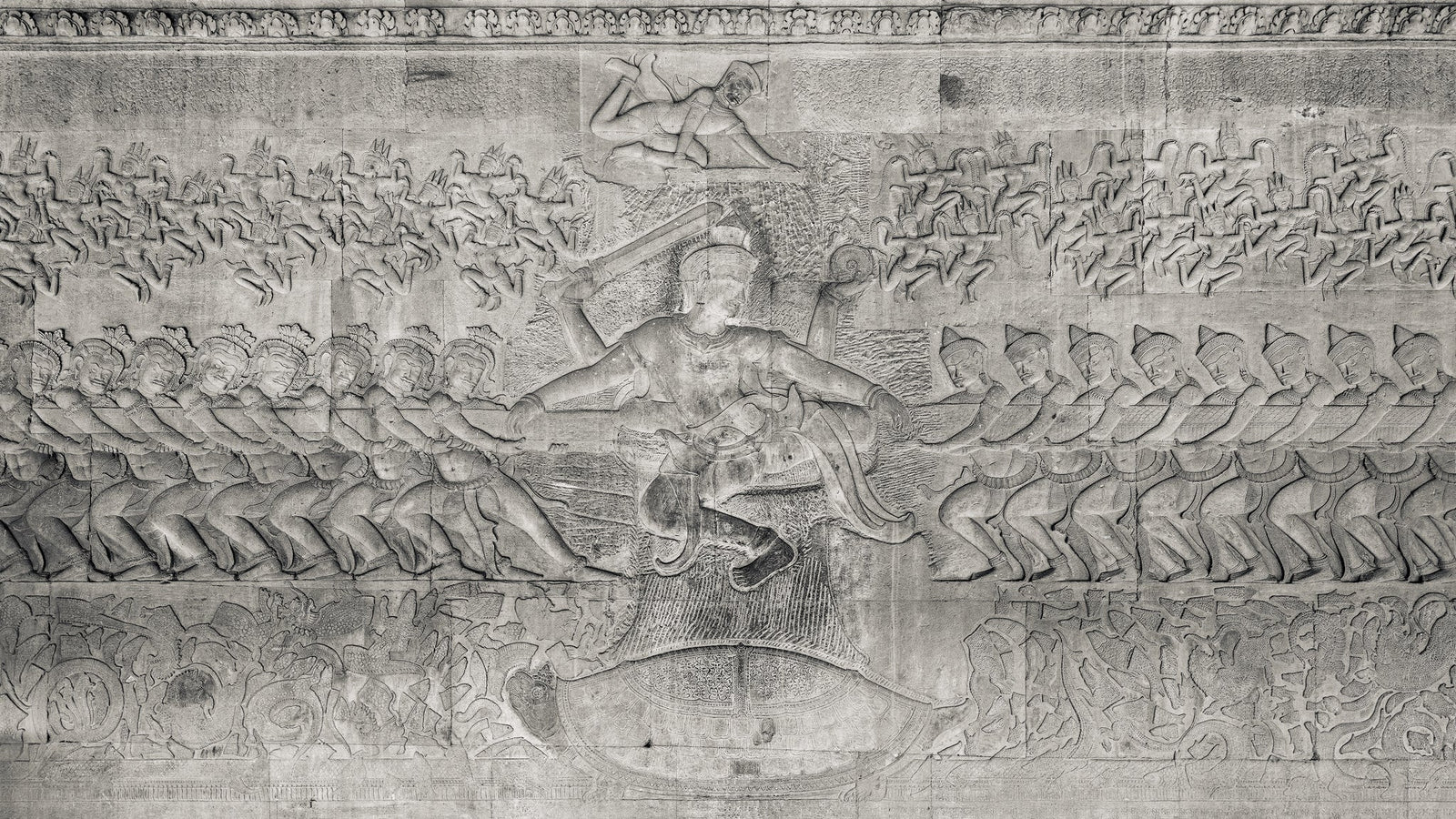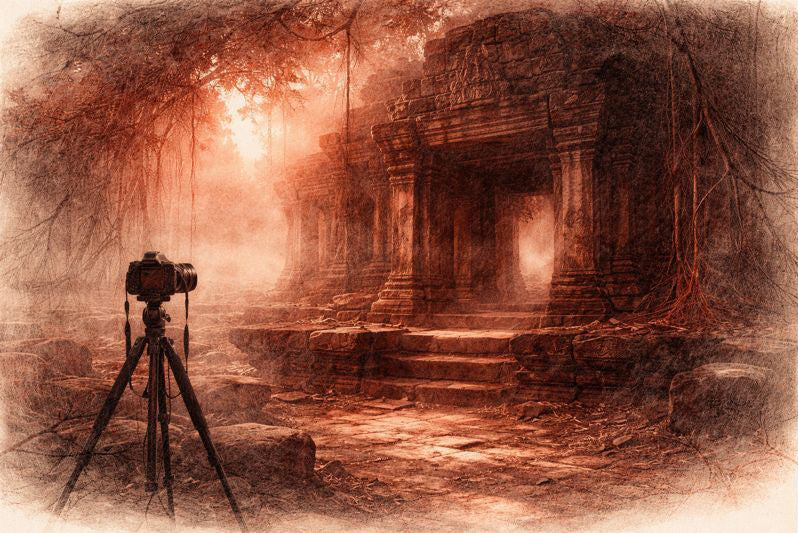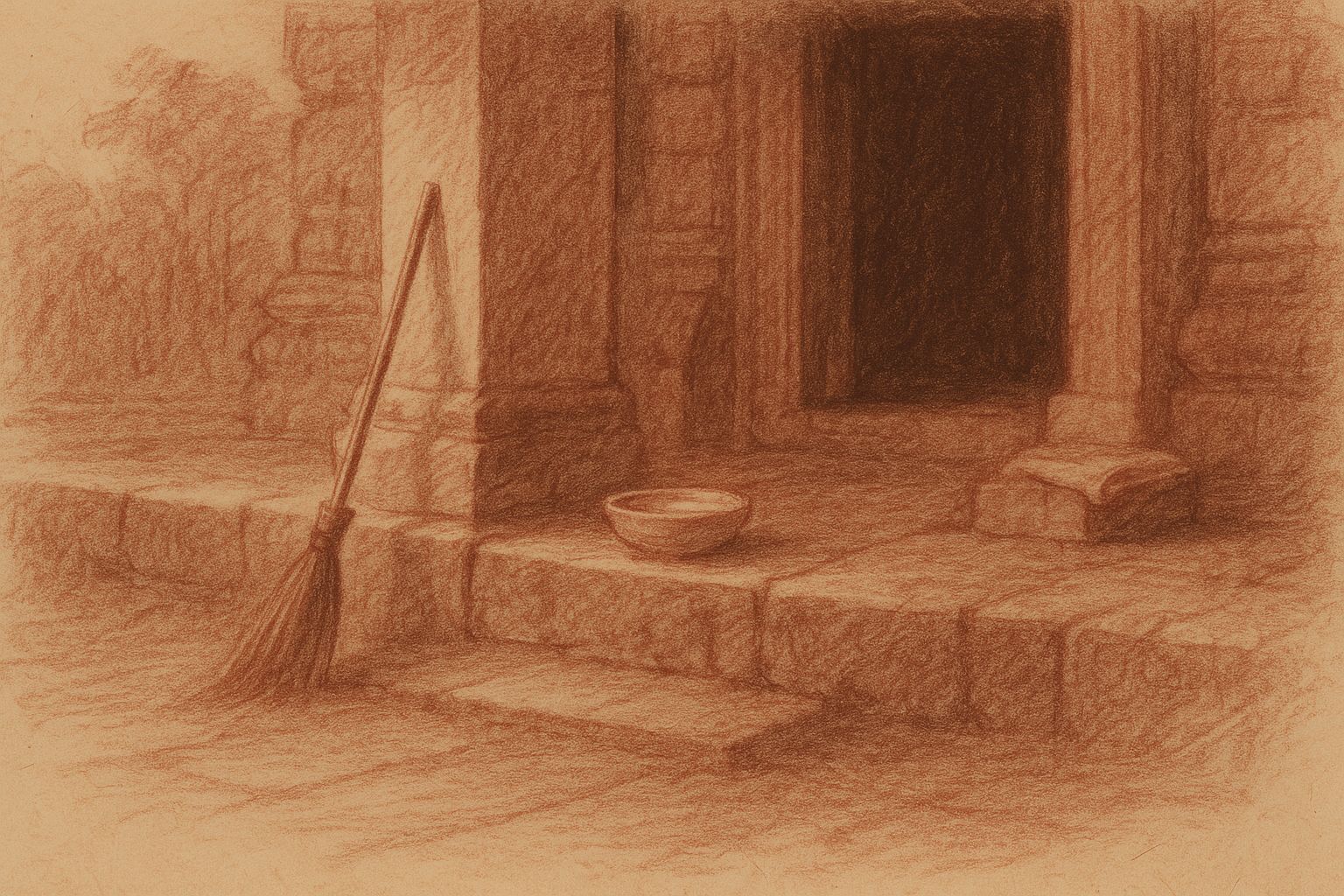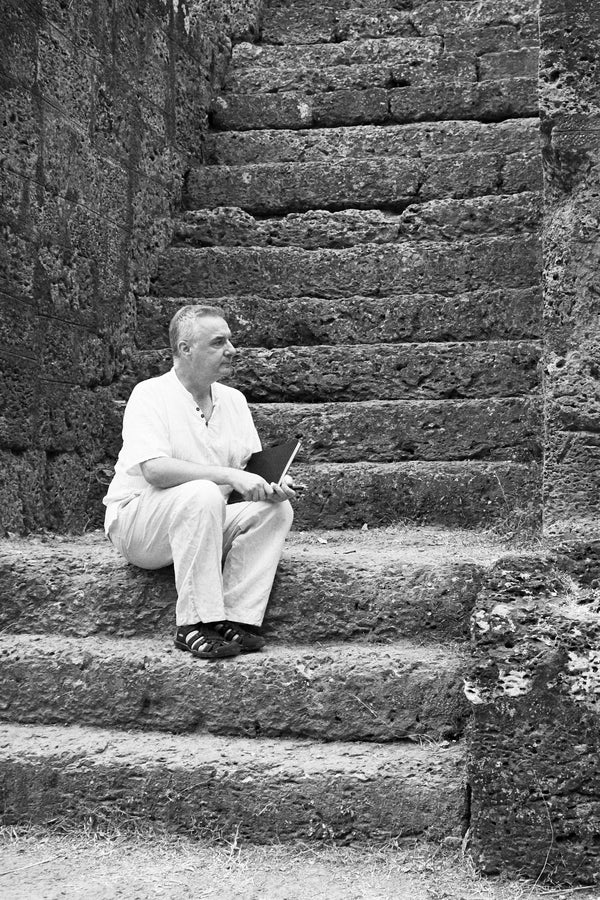Complimentary worldwide shipping on orders over $400 · No import tariffs for most countries
Complimentary worldwide shipping on orders over $400 · No import tariffs for most countries

The Churning of the Ocean of Milk at Angkor Wat Temple, Part III: Vishnu Presides
3 min read
Continuing our examniation of the relief, we come to the centre of the panel where we see the unfinished figure of Vishnu directing the churning efforts of the devas and asuras, who pull the great naga Vasuki acting as the rope around the churning post.

Figure 1. Vishnu Directing the Churning of the Ocean of Milk, Angkor Wat Temple, Cambodia
You can see a larger version of this image by clicking here. ⧉
Figure 1 shows, at the very centre of the relief, Vishnu Caturbhuja (with four arms) in the act of assisting the Churning and attempting to balance Mount Mandara, which serves as the churning pole. He seems to be suspended in the air in front of Mount Mandara. Vishnu's upper two arms brandish the discus and the club, while with his lower two he holds the serpent Vasuki.
Unfortunately the relief is unfinished; Vishnu's left leg is not fully sculpted and below it is a blank area where the products of the churning were to be added, including the jar of the amrita. If you look carefully, above Vishnu’s discus you can see two outlined figures of a small horse (Uchchaihshravas) and a tiny elephant (Airavata) , but they are so crudely carved that it is possibile they were later additions.
In Khmer reliefs the asuras are depicted to the south, the devas to the north.
The asuras to the left are depicted almost identically to the devas on the right, the main distinguishing feature being the asuras' crested helmets versus the devas' conical crowns.
Along the top, to either side, is a register teeming with apsaras, born from the Churning, in graceful flight.
At the bottom is a register depicting marine life, including nagas and reachisey (a sort of dragon with four short legs), being chopped to pieces by the vortex of the Churning.

Figure 2. Vishnu Stabilising Mount Mandara, Angkor Wat Temple, Cambodia
The small figure depicted flying above the pole (Figure 2), who seems to be leaning on or touching it with his two hands, is believed to be another of Vishnu’s manifestations contributing to the churning activity by stabilising of Mount Mandara. Finot believed this to be demonstrated by a passage of the Bhagavata Parana in which it is said Vishnu was on Mount Mandara 'holding it with his hands, cherished by the rain of flowers of the gods' (Brahma, Indra, Shiva and others). This, however, may refer also to the large central figure of Vishnu, sculpted half-way up Mount Mandara.
The local guides prefer to identify this figure with Indra, as suggested by the Mahabharata, who we know was watching the churning and therefore not involved in the action, ready to take for himself the elephant Airavata and the horse Uchchaihshravas as they were created.

Figure 3. Kurma Supporting Mount Mandara, Angkor Wat Temple, Cambodia
Mount Mandara is supported by Vishnu's avatar, the tortoise Kurma, who wears a small crown.
In the Mahabharata, which is earlier than the various Puranas and the Ramayana, Vishnu merely grants more energy to the devas and asuras while they churn the ocean. He neither intervenes to support the churning pole, nor to keep it stabilised; he does not participate in the actual pulling of the snake’s body. Even the tortoise described in the text is simply the King of the tortoises, not necessarily Vishnu’s avatar Kurma. The final products, however, are the same and include the all-important amrita.
The tortoise is an important figure in Hindu mythology as it is the embodiment of creative power. In Agnicayana rituals the tortoise is placed in the lowest of the altar’s five layers. In general, it is a common feature of Hindu temples where sometimes it is represented simply as a hexagonal figure. It is placed at the centre of the building, or in front of the main shrine of the god, to remind the faithful of its pivotal position in the Churning. In some Balinese temples the whole structure rests on the design of a tortoise, from which the head, four legs and a small tail appear to be poking out. It is a well known fact that in Cambodia, small tortoises cast in metal are often found in the foundation stone of the temple, amongst other objects constituting the 'treasure', and placed in a well dug at the centre of the temple’s foundations.
Next, we will continue with our examination of this relief in The Churning of the Ocean of Milk at Angkor Wat Temple, Part IV: The Devas.
Also in Library

Before the Shutter Falls
3 min read
Before the shutter falls, fear sharpens and doubt measures the cost of waiting. In the quiet hours before dawn, the act of not-yet-beginning becomes a discipline of attention. This essay reflects on patience, restraint, and the quiet mercy that arrives when outcome loosens its hold.

Those Who Keep the Way Open — On the Quiet Guardians of Angkor’s Thresholds
3 min read
Quiet gestures shape the way into Angkor — a swept stone, a refilled bowl, a hand steadying a guardian lion. This essay reflects on the unseen custodians whose daily care keeps the thresholds open, revealing how sacredness endures not through stone alone, but through those who tend its meaning.

Multiplicity and Mercy — The Face Towers of Jayavarman VII
5 min read
A new vision of kingship rises at the Bayon: serene faces turned to every horizon, shaping a world where authority is expressed as care. Moving through the terraces, one enters a field of steady, compassionate presence — a landscape where stone, light, and time teach through quiet attention.
Join My Studio Journal
Receive occasional letters from my studio in Siem Reap—offering a glimpse into my creative process, early access to new fine art prints, field notes from the temples of Angkor, exhibition announcements, and reflections on beauty, impermanence, and the spirit of place.
No noise. No clutter. Just quiet inspiration, delivered gently.
Subscribe and stay connected to the unfolding story.

Join My Studio Journal
Receive occasional letters from my studio in Siem Reap—offering a glimpse into my creative process, early access to new fine art prints, field notes from the temples of Angkor, exhibition announcements, and reflections on beauty, impermanence, and the spirit of place.
No noise. No clutter. Just quiet inspiration, delivered gently.
Subscribe and stay connected to the unfolding story.
